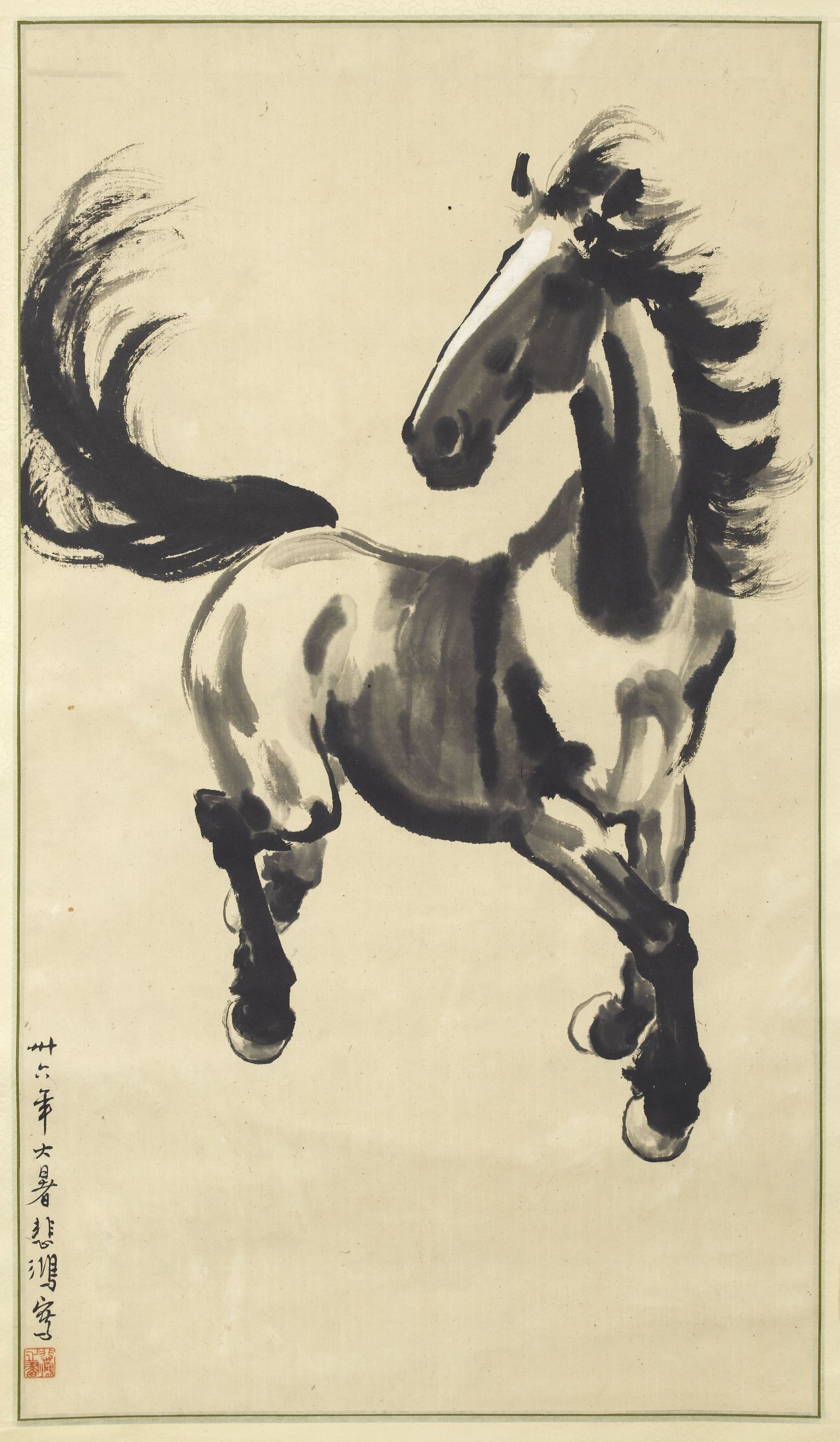
Cheval
Papier, Encre
Peinture
悲鴻; 悲鴻之畫
Don manuel : Guo, Youshou 郭有守, Docteur
M.C. 8700
Inscription and signature: 款識:卅六年大暑。悲鴻寫。
Painter’s seal: 印:悲鴻之畫(朱文) In China, horse painting is a genre in its own right, explored over the dynasties by major artists. Xu Beihong’s depiction of this traditional theme through a new realism illustrates his conception of the reform of Chinese painting. In its technique, the work, executed in ink on paper, carries the heritage of traditional painting. Yet the angle of view and the way Xu Beihong captures the horse’s suspended movement illustrate a conception of space and ability to deconstruct movement that testify to his grasp of Western artistic techniques. For the spatial representation of the horse, he uses his skills in drawing from life, and through ink tone and brushstroke he expresses its energy.
Paintings of galloping horses are typical of Xu Beihong’s work. In a 1922 charcoal self-portrait the young artist portrayed himself in front of a sketch of leaping horses. Among the vast range of historic compositions from the early 1930s, the theme favoured by Jiufang Gao 九方臬 also inspired the depiction of numerous horses in various poses. From the late 1930s, the horse theme was omnipresent, sometimes shown in a natural setting but most often alone on a white page. This form of composition brought out the vigorous nature of the animal, often considered as a figure of the nation, both in wartime and during the foundation of the People’s Republic.